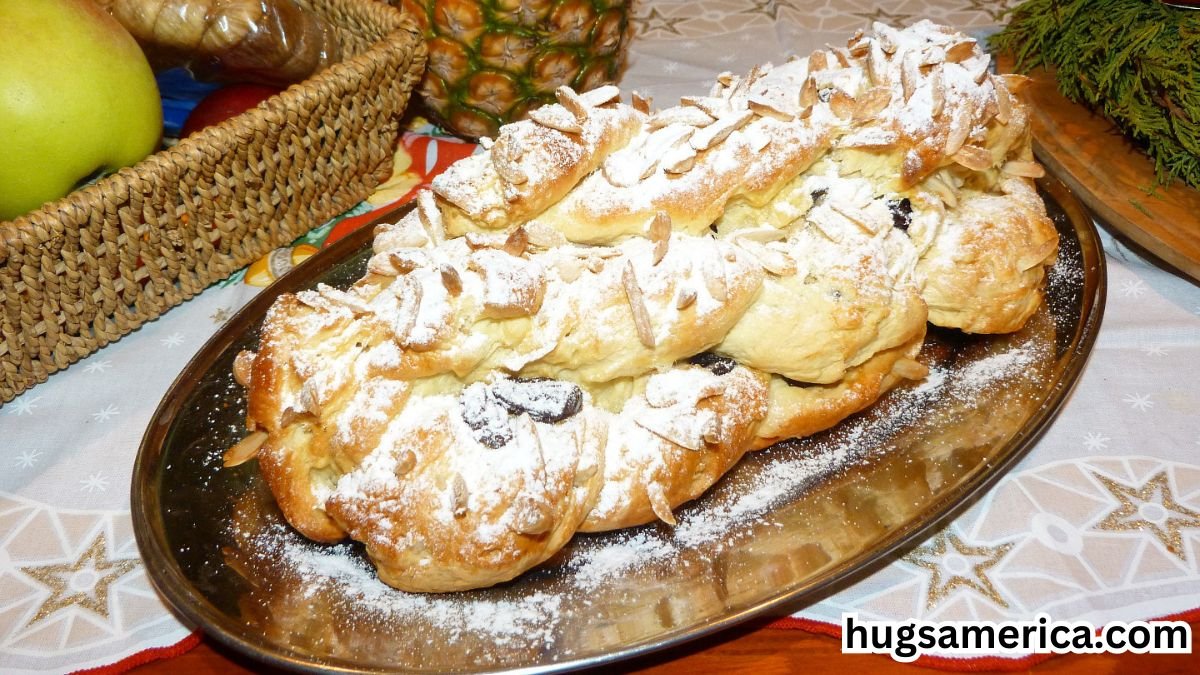Introduction to Buší
In a world characterized by rapid globalization and technological advancements, traditional culinary practices hold a special place as they connect us to our roots and offer a taste of history. Among these cherished traditions is Buší, a culinary gem with remarkable cultural and historical significance.
Buší is more than just a dish; it is a culinary tradition that embodies the essence of its cultural context. This age-old recipe has been passed down through generations, serving as a symbol of identity, community, and heritage. In this blog post, we will explore the rich history, traditional preparation methods, cultural significance, and regional variations of Buší, ultimately understanding its place in both historical and contemporary culinary arts.
The Origins and History of Buší
Ancient Roots of Buší in Eastern Europe
The origins of Buší can be traced back to antiquity, with roots deeply embedded in the rich cultural tapestry of Eastern Europe. Historical records suggest that Buší has been a staple in Eastern European cuisine for centuries, reflecting the region’s diverse culinary heritage. The dish likely originated from nomadic tribes who traversed the vast landscapes, relying on locally available ingredients to sustain themselves.
Evolution through Medieval Times and Nomadic Tribes
As Buší evolved through medieval times, it became more than just a means of sustenance. It transformed into a cultural symbol, representing the resilience and adaptability of the people who prepared it. The nomadic tribes of Eastern Europe perfected the art of Buší preparation, incorporating wild game, foraged produce, and local herbs into their recipes. This evolution not only enriched the dish’s flavor profile but also cemented its place in the region’s culinary history.
Traditional Preparation and Techniques
Buší is a testament to the enduring value of traditional culinary techniques. The preparation of Buší involves time-honored methods that have been meticulously preserved over generations. These techniques are as much about the process as they are about the final product.
Time-Honored Techniques
Traditional Buší preparation typically begins with the selection of ingredients. Local herbs, wild game, and foraged produce are essential components of this dish. The ingredients are carefully chosen to ensure authenticity and quality.
Role of Local Herbs, Wild Game, and Foraged Produce
Local herbs such as dill, parsley, and thyme add a distinctive aroma and flavor to Buší. Wild game, which was readily available to the nomadic tribes, forms the protein base of the dish. Foraged produce like mushrooms, berries, and root vegetables contribute to the dish’s unique taste and nutritional value.
Family Traditions and Transmission of Recipes
One of the most remarkable aspects of Buší is the way in which its recipes have been transmitted through generations. Family traditions play a crucial role in preserving the authenticity of Buší. Recipes are often passed down orally, with each generation adding its own touch while respecting the essence of the original. This continuity ensures that Buší remains a living testament to cultural heritage.
Cultural Significance and Symbolism
Buší is not merely a dish; it is a profound expression of cultural identity and community solidarity. Throughout history, Buší has played a pivotal role in various rituals, ceremonies, and communal gatherings.
Expression of Cultural Identity and Community Solidarity
For many Eastern European communities, Buší is a symbol of identity. It represents the unique flavors and culinary traditions of the region. Preparing and sharing Buší strengthens the bonds within communities, fostering a sense of togetherness and belonging.
Symbolism in Rituals and Ceremonies
Buší is often associated with important cultural rituals and ceremonies. In some regions, it is prepared during religious festivals, weddings, and other significant events. The act of preparing Buší becomes a ritual in itself, symbolizing tradition, continuity, and respect for the past.
Role in Community Bonding and Cultural Preservation
The communal aspect of Buší preparation cannot be overstated. Families and communities come together to prepare and enjoy Buší, creating lasting memories and reinforcing cultural ties. This communal effort ensures that the traditions and values associated with Buší are preserved for future generations.
Nutritional Value and Health Benefits
Buší is not only a cultural treasure but also a nutritious and wholesome dish. Its ingredients are carefully selected to provide a balanced and healthful meal.
Analysis of Nutritional Components
Buší typically contains a rich array of nutrients, including protein from wild game, vitamins and minerals from foraged produce, and antioxidants from local herbs. These components contribute to the dish’s overall nutritional value, making it a valuable part of a balanced diet.
Contribution to a Balanced Diet
Buší’s balanced combination of protein, vegetables, and herbs makes it a well-rounded meal. It provides essential nutrients that support overall health and well-being. Additionally, the use of natural, locally sourced ingredients ensures that Buší is free from artificial additives and preservatives.
Regional Variations and Culinary Diversity
Buší is not a monolithic dish; it boasts a diverse range of regional variations, each influenced by local ingredients and customs.
Exploration of Different Regional Variations
In different regions of Eastern Europe, Buší takes on unique forms. Some variations may emphasize specific herbs, while others incorporate distinct types of game or foraged produce. These regional variations reflect the adaptability of Buší to different environments and culinary preferences.
Influence of Local Ingredients and Customs
Local ingredients and customs play a significant role in shaping the flavors of Buší. For example, in forested areas, mushrooms and berries may feature prominently, while coastal regions might incorporate fish or seafood. These variations highlight the versatility of Buší and its ability to reflect the local terroir.
The Recipe and Preparation of Buší
For those eager to experience the culinary delight of Buší, here is a step-by-step guide to preparing this traditional dish.
Step-by-Step Guide to Preparing Traditional Buší
- Ingredients:
- Wild game (e.g., venison, boar)
- Foraged produce (e.g., mushrooms, root vegetables)
- Local herbs (e.g., dill, parsley, thyme)
- Onions, garlic, and other aromatics
- Broth or stock
- Preparation:
- Marinate the Game: Begin by marinating the wild game in a mixture of herbs, garlic, and olive oil for several hours or overnight.
- Sauté Aromatics: In a large pot, sauté onions, garlic, and other aromatics until they become fragrant.
- Add Game and Vegetables: Add the marinated game to the pot and brown it on all sides. Then, add the foraged produce and continue to sauté.
- Simmer in Broth: Pour in the broth or stock, ensuring that the ingredients are fully submerged. Bring to a boil, then reduce the heat and let it simmer until the game is tender and the flavors have melded together.
- Season and Serve: Adjust the seasoning with salt, pepper, and additional herbs as needed. Serve hot, garnished with fresh herbs.
Tips for Achieving Authentic Flavors at Home
- Use fresh, locally sourced ingredients whenever possible.
- Allow ample time for marinating and simmering to develop rich flavors.
- Experiment with different herbs and vegetables to customize the dish to your taste.
Culinary Exchange: Sharing Buší With the World
Buší has transcended its regional origins and found a place on the global culinary stage.
Spread Beyond Its Region of Origin
As people migrate and cultures intermingle, Buší has been introduced to new audiences around the world. Its unique flavors and cultural significance have resonated with food enthusiasts and cultural explorers everywhere.
Adaptation and Embrace by Different Cultures
Buší has been adapted and embraced by various cultures, each adding its own twist to the traditional recipe. These adaptations reflect the universal appeal of Buší and its versatility as a culinary creation.
Buší in Modern Times
In today’s culinary landscape, Buší continues to evolve, blending traditional techniques with modern innovations.
Contemporary Relevance in Culinary Arts
Buší remains a relevant and cherished dish in contemporary culinary arts. Chefs and home cooks alike celebrate its rich history and complex flavors, finding new ways to incorporate it into their repertoire.
Fusion of Traditional and Modern Techniques
Many chefs are experimenting with fusing traditional Buší techniques with modern culinary methods. This fusion creates exciting new interpretations of Buší while honoring its historical roots.
YOU MAY ALSO LIKE
Unveiling Çebiti: Ottoman Heritage in a Pastry
Conclusion
The enduring legacy of Buší as a traditional dish is a testament to its cultural, culinary, and historical significance. From its ancient origins to its modern adaptations, Buší continues to captivate and delight food enthusiasts and cultural explorers alike.
As we celebrate Buší, we also reflect on its future prospects in the global culinary scene. The preservation and promotion of such traditional dishes are crucial for maintaining cultural diversity and enriching our culinary experiences.
By exploring and appreciating Buší, we not only savor its flavors but also honor the traditions and stories that have shaped this remarkable dish. Whether enjoyed in its traditional form or with a modern twist, Buší remains a symbol of heritage, community, and culinary excellence.
Frequently Asked Questions (FAQs)
1. What is Buší?
Buší is a traditional Eastern European dish made from wild game, foraged produce, and local herbs, offering a rich and diverse culinary experience.
2. How do you prepare traditional Buší?
To prepare Buší, marinate wild game in herbs and garlic, sauté aromatics, brown the game, add foraged produce, simmer in broth, and season before serving.
3. What are the regional variations of Buší?
Regional variations of Buší depend on local ingredients and customs, such as using mushrooms and berries in forested areas or incorporating seafood in coastal regions.
4. What makes Buší a part of a balanced diet?
Buší combines protein, vegetables, and herbs, providing essential nutrients and being free from artificial additives, making it a valuable part of a balanced diet.
5. How has Buší spread globally?
Buší has transcended its regional origins through cultural exchange, being adapted and embraced by diverse cultures worldwide, reflecting its universal appeal.










